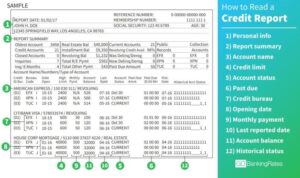Step up your financial game with the coolest budgeting apps designed to help teens navigate the world of money management. From tracking expenses to setting financial goals, these apps have got you covered in style.
Get ready to explore the top budgeting apps that will revolutionize how you handle your money.
Introduction to Budgeting Apps
Budgeting apps are digital tools designed to help individuals manage their personal finances effectively. These apps offer a convenient way to track income, expenses, savings, and investments all in one place.
Benefits of Using Budgeting Apps
- Easy Tracking: Budgeting apps allow users to monitor their spending habits in real-time, helping them stay within budget limits.
- Financial Goal Setting: Users can set specific financial goals, such as saving for a vacation or paying off debt, and track their progress towards achieving them.
- Automated Budgeting: Some apps offer automated features that categorize transactions, create budgets, and provide personalized insights to improve financial health.
- Accessibility: Budgeting apps can be accessed anytime, anywhere, making it easy for users to stay on top of their finances on the go.
Comparison of Different Budgeting Apps
| App Name | Features | Cost |
|---|---|---|
| Mint | Expense tracking, goal setting, credit score monitoring | Free |
| You Need a Budget (YNAB) | Zero-based budgeting, debt paydown tools, financial workshops | Subscription-based |
| Personal Capital | Investment tracking, retirement planner, net worth calculator | Free with optional paid financial advisory services |
Key Features of Budgeting Apps

Budgeting apps offer a variety of features to help users manage their finances effectively. These features are designed to simplify the process of tracking expenses, income, and setting financial goals.
Expense and Income Tracking
Budgeting apps allow users to easily track their expenses and income by categorizing transactions automatically or manually. Users can view detailed reports and summaries to understand their spending habits and identify areas where they can save or cut back.
Financial Goal Setting
Budgeting apps provide tools for users to set and track financial goals, such as saving for a vacation, buying a new car, or paying off debt. Users can input their goals, set target dates, and monitor their progress over time. Some apps even offer personalized recommendations to help users achieve their goals faster.
Automated Budgeting
Many budgeting apps offer automated features like bill reminders, expense alerts, and budget adjustments based on spending patterns. This helps users stay on track with their financial goals and avoid overspending.
Syncing and Integration
Budgeting apps often sync with users’ bank accounts, credit cards, and other financial accounts to provide real-time updates on transactions and balances. Some apps also integrate with other financial tools like investment accounts or payment platforms for a comprehensive view of their finances.
Customization and Flexibility
Users can customize their budgeting apps based on their individual preferences and financial priorities. From setting spending limits to creating custom categories, users have the flexibility to tailor the app to their specific needs and goals.
Popular Budgeting Apps
Budgeting apps have become increasingly popular tools for individuals looking to manage their finances effectively. Let’s take a look at some of the most popular budgeting apps, their pricing models, and user interface.
List of Popular Budgeting Apps
- Mint: Mint is a free budgeting app that allows users to track their spending, create budgets, and receive personalized financial tips.
- You Need A Budget (YNAB): YNAB is a subscription-based budgeting app that focuses on giving every dollar a job and helping users break the paycheck-to-paycheck cycle.
- Personal Capital: Personal Capital is a free app that not only helps users budget but also offers investment tracking and retirement planning tools.
- PocketGuard: PocketGuard is a budgeting app that syncs all of your financial accounts to give you a comprehensive view of your finances in one place.
Comparison of Pricing Models
While some budgeting apps like Mint and Personal Capital are free to use, others like YNAB follow a subscription-based model. Users need to consider their budget and financial goals when choosing a budgeting app based on pricing.
User Interface and Ease of Use
The user interface of budgeting apps plays a crucial role in how effectively users can manage their finances. Apps like Mint and PocketGuard are known for their intuitive interfaces, making it easy for users to track their spending and create budgets seamlessly.
Security and Privacy in Budgeting Apps
When it comes to budgeting apps, security and privacy are paramount to protect sensitive financial information from falling into the wrong hands.
Importance of Security Measures
Security measures in budgeting apps are crucial to prevent unauthorized access to personal financial data. These apps store sensitive information such as bank account details, income, expenses, and savings goals, making them attractive targets for cybercriminals.
- Implementing encryption protocols to secure data transmission between the app and servers.
- Utilizing multi-factor authentication to ensure only authorized users can access the app.
- Regularly updating security features to address new cyber threats and vulnerabilities.
User Data Privacy Measures
Budgeting apps take various steps to safeguard user data privacy and maintain trust with their users.
- Obtaining explicit consent from users before collecting or sharing any personal information.
- Adhering to strict privacy policies that Artikel how user data is collected, stored, and used.
- Providing users with options to control their privacy settings and choose what information they want to share.
Encryption and Authentication in Budgeting Apps
Encryption and authentication play a vital role in protecting sensitive information within budgeting apps.
- Encryption: Budgeting apps use encryption algorithms to encode data, ensuring that even if intercepted, it cannot be read without the decryption key.
- Authentication: Users are required to authenticate their identity through passwords, biometrics, or other means to access their accounts, adding an extra layer of security.






